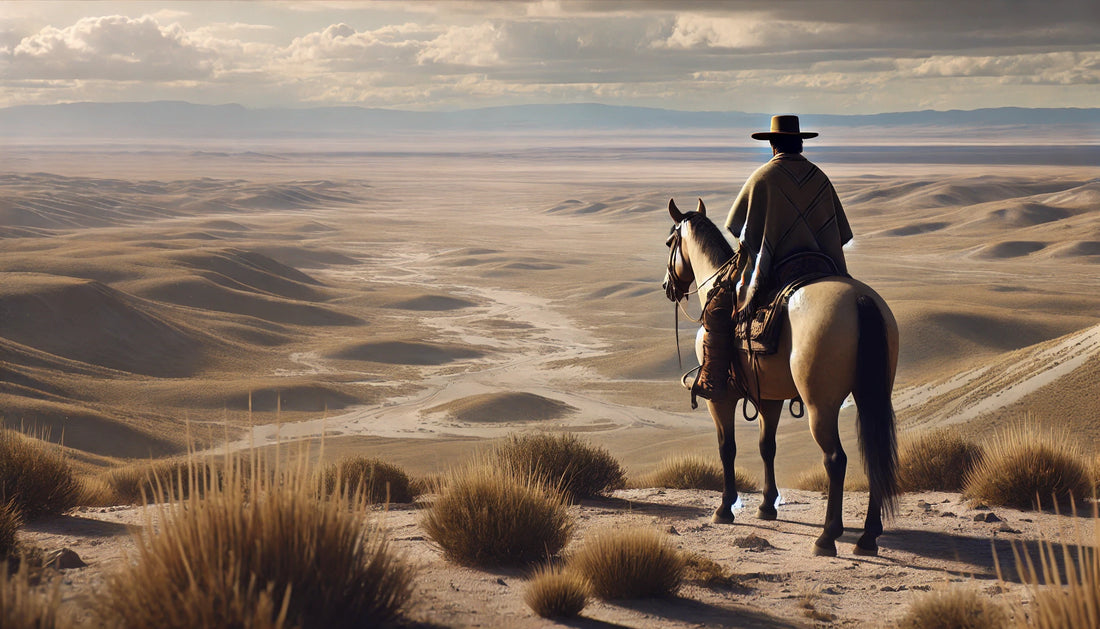
The Patagonian Desert: Argentina’s Last Frontier
Share
The Patagonian Desert, one of the largest deserts globally, spans an impressive 670,000 square kilometers. This makes it larger than France, covering parts of both Argentina and Chile. Unlike the iconic Sahara, the Patagonian Desert is a cold desert, characterized by its harsh winds and arid climate. This unique environment has shaped not only the landscape but also the history and culture of the region.
Geography and Climate
The Patagonian Desert extends from the southern limits of the Pampa to the lush Magellanic forests of Tierra del Fuego. The region's climatic conditions are influenced by the Andes Mountains, which block moist westerly winds, resulting in the desert's aridity. Despite its desert status, the Patagonian Desert can experience cold temperatures, especially during winter, when snow can blanket the ground.
Historical Significance
For centuries, the Patagonian Desert has been a land of intrigue for adventurers, colonialists, and even criminals. Its vast, desolate expanses and low population density have made it an ideal place for those seeking solitude or escape from the law. Early maps of Argentina depict the desert as a remote wilderness, largely unexplored by Europeans.
Wildlife and Indigenous Peoples
Originally, the Patagonian Desert was home to a rich array of wildlife, including the Andean puma and the guanaco, its primary prey. The region's ecosystem also supports species like the western ribbon snake. Indigenous populations, such as the Tehuelche, have lived in Patagonia for centuries, coexisting with the diverse wildlife. The coastal areas, particularly Peninsula Valdés, are renowned for their marine life, offering some of the world's best opportunities to observe southern right whales and orcas hunting sea lions .
The Gaucho: Icon of Patagonia
One of the most iconic symbols of Argentina, the gaucho, finds its roots in the Patagonian Desert. Similar to the North American cowboy, the gaucho is both a celebrated hero and a notorious bandit. These rugged horsemen played a crucial role in the exploration and colonization of Patagonia. Gauchos were often the first Europeans to venture into the region, paving the way for further colonization. However, their independence and frequent involvement in cattle theft branded them as outlaws.
Despite their outlaw status, gauchos were indispensable to the Argentine government in the 19th century. Argentina needed tough, capable fighters to secure and settle Patagonia before Chile could claim it. The gauchos' skills in navigating the harsh landscape and their expertise in cattle ranching made them invaluable allies in this territorial contest .
Transformation and Preservation
Over time, the increasing colonization and development of Patagonia, especially the fencing of the desert for sheep herding, forced many gauchos to adapt. Some settled to work on ranches, while others moved to growing cities. The traditional, nomadic lifestyle of the gaucho began to wane. Yet, the harsh environmental conditions of the Patagonian Desert, unsuitable for large-scale farming, helped preserve some of the gaucho's traditions and customs.
The region's sparse population and wild nature have allowed those gauchos who remained to continue practicing their way of life. Their past as cattle thieves has largely been overlooked, and they are now celebrated for their contributions to the development of Patagonia and the agricultural sector. Their deep knowledge of animals and the land, combined with their ability to endure tough conditions, makes them respected members of society .
A Land of Mystery and Beauty
The Patagonian Desert remains deeply interconnected with the history of its people and is far from having revealed all its secrets. Its rugged beauty and remote locations continue to captivate those who venture into its vastness. From the unique wildlife to the enduring legacy of the gaucho, Patagonia is a region full of wonders waiting to be discovered.
Conclusion
In showcasing the beauty and richness of the Patagonian Desert, we aim to transport you to this isolated yet fascinating place from the comfort of your home. At Artgentina, we offer a wide selection of Argentine craft products, including kitchen knives used by the gauchos, scarf brooches, and traditional clothing like belts and shawls. Explore our offerings and dive deeper into Argentine culture by visiting our blog.
